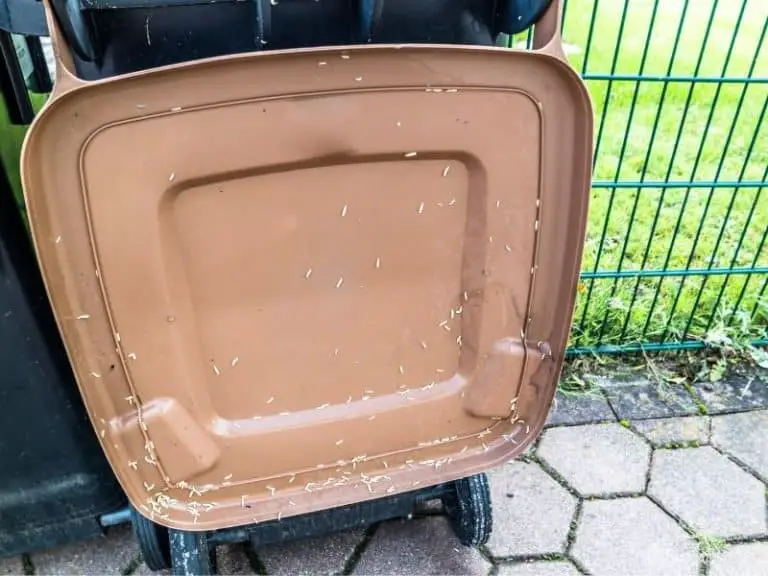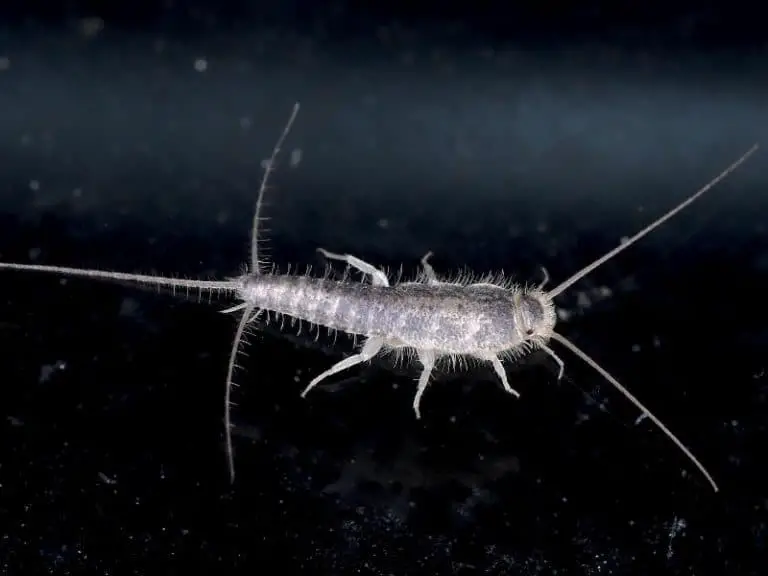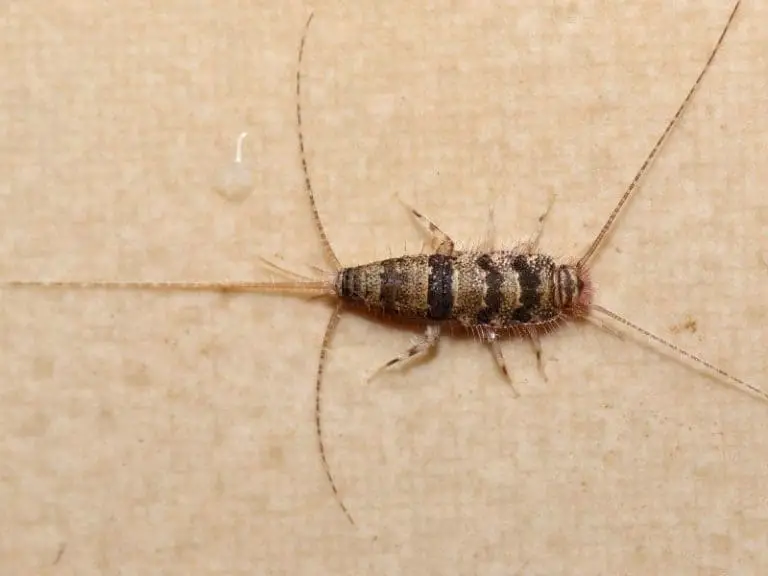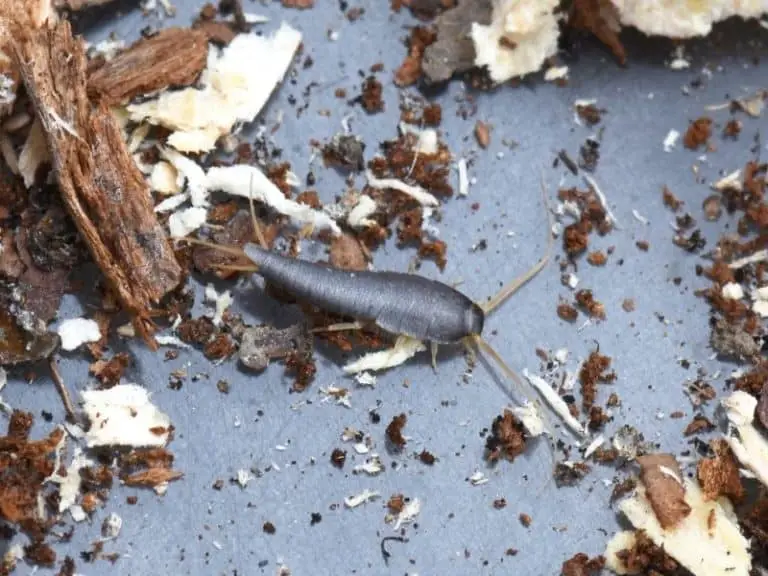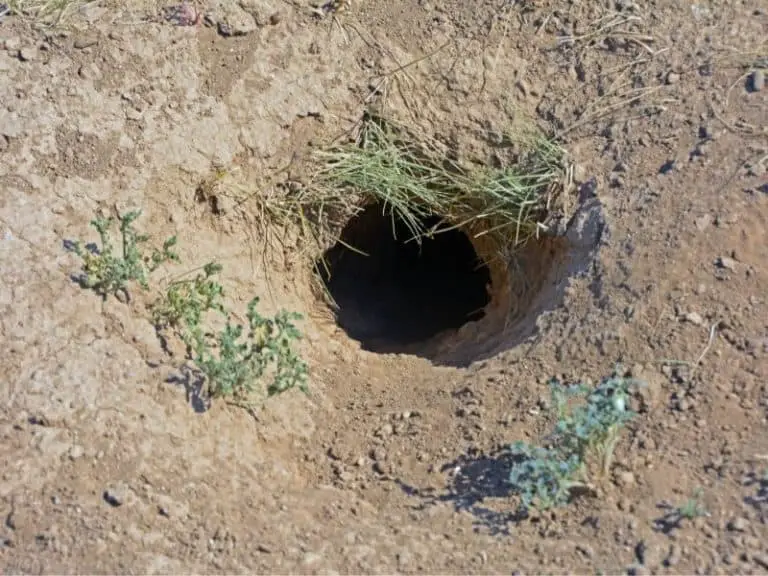Are No See Ums Dangerous?
It is natural to worry about no see ums if you think that they may be dangerous, especially since they are persistent pests that do not seem to get tired or deterred by your efforts to keep them away. It would therefore be difficult to protect yourself from such a pest if they can easily inflict harm or transmit diseases and other problems to you and your family.
People have observed that no see ums love to fly and swarm all around you, and even land and make contact with the skin to take a bite. You, therefore, deserve to know if no see ums are dangerous insects or not.
No see ums are only generally a nuisance to people. They do not transmit diseases to humans in the US, although they can transmit human diseases in tropical countries. In cattle, horses, deer, and others, they transmit pathogens that cause epizootic hemorrhagic disease and bluetongue.
As a nuisance, no see ums may cause a little itching, allergic reaction, and slight inflammation in the skin at the bite site.
In people and in pets, these insects do not pose any kind of major health problem in North America. However, in poorer tropical countries, similar insects may be able to cause serious diseases in people, such as leishmaniasis, filarial worms, and phlebotomus.
These are caused by insects known as black flies, which, although they are also considered midges just as no see ums are, might be different from the species of no see ums known in the US and other countries. So what are the concerns that people need to address in the US regarding no see ums?
What States Have No See Ums?
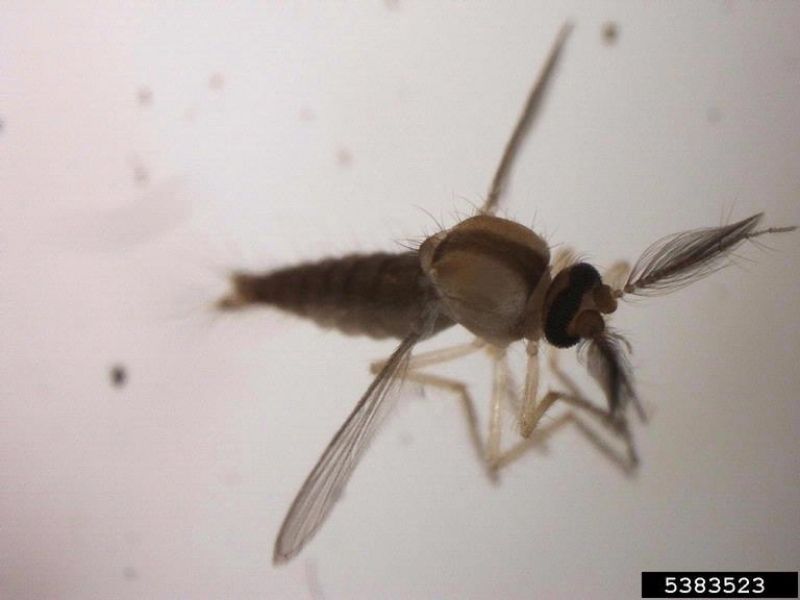
No see ums are prevalent and naturally occur in the following states and locations in the United States: the Texas Gulf Coast; the San Francisco Bay area and other coastal areas; South Carolina; North Carolina; Georgia; and Florida.
The names for insects that are known as no see ums vary between places, and this may cause confusion if you are trying to find out if they are harmful or not. In some localities, no see ums are called biting midges and sand flies.
Regardless of what they are called, however, no see ums are tiny gnats that naturally occur and are common in the aforementioned states. More than 4,000 species known to be biting midges are found in Texas as well as in other coastal locations in the country.
No see ums like to lay their eggs in wet soil and wet sand. In the state of Texas, they are known to use places such as marshes, swamps, ponds, streams, and plants and tree holes that contain water pockets. They utilize these areas for breeding purposes.
Out of the more than four thousand biting midge species all over the world, 600 species are present in the North American continent.
Midges have a wide distribution in the United States, especially in the areas of the Southwest, Northeast, San Francisco Bay area, and the Gulf and Atlantic coasts. In Florida, 47 species are present, with seven species being recognized by that state as human pests.
What Time of Day Do No See Ums Come Out?
No see ums are usually actively feeding during the dawn and at dusk. They are rarely observed to bite people during the hours of daytime.
Both male and female no see ums feed on nectar, but females actually primarily feed on the blood of mammals, although they are also known to feed on the blood of various other animals like amphibians, reptiles, and birds.
Where Are No See Ums Found?
No see ums are found worldwide. The currently known number of species ranges from 4,000 up to 5,000. They are found in temperate, sub-Saharan, sub-tropical, and tropical regions. They are also present in cooler climates, including even Mount Everest, and in saltwater marshes and freshwater habitats.
The presence of no see ums in freshwater habitats and saltwater marshes depends on the different preferences of various biting midge species.
These insects usually prefer living in places with a lot of water because they need these bodies of water for their feeding and breeding activities. Their larvae in particular need and thrive in these places. They also enjoy hot conditions, so that they are more likely to be observed in the summer months.
If you are near a body of water, such as a stream, river, lake, or even near a dam, you may likely encounter no see ums.
This is not an admonition to avoid these areas, however, as they are excellent areas for camping, hiking, and appreciating nature. There are, after all, effective measures by which you can repel no see ums and their bites.
The classification and inclusiveness of their various geographical ranges also depend on what these animals are called in different regions and countries. It is thus important to determine if several names of insects in different localities are describing just one species.
For example, no see ums are called “knotts” by Norwegians, while Canadians call them “moose flies.” Meanwhile, Gaelic nations refer to them as “meanbh-chuileag,” which means “tiny fly.”
Where Do No See Ums Live?
No see ums live in habitats near water. They love these areas because their immature stages or larvae are semi-aquatic or aquatic. They also lay eggs in damp substrates such as agricultural areas, salt marshes, and swamps. These areas have moist soil that have high organic content like manure.
Muddy salt marshes, agricultural areas containing manure, and other places with moist surfaces are preferred by females for egg laying. Nonetheless, preferences for habitats vary among different no see um species.
Females have to feed on the blood of their mammalian and other hosts in order to provide adequate sustenance for egg production.
The entire life cycle of no-see-ums involves metamorphosis. They have four life stages, as is common with many insect species.
Specifically, these stages are the egg, larval, pupal, and adult stages.
After a sufficient blood meal, the adult no see um female will seek a body of water for laying her eggs, such as in or near riverbanks, marshes, still ponds, or even hollowed-out moist tree stumps.
The eggs are laid in what is known as a lace. These laces are moist, due to the need of larvae for high amounts of moisture for their development. The eggs of no see ums hatch after two to seven days after they have bene laid.
The larvae then undergo four instar stages. The insect may be in the larva stage from two weeks up to one year. This is dependent on the conditions in the environment, the region, and the particular no see um species in consideration.
The third stage, the pupa, lasts for two or three days. Then finally, once the adult emerges, it typically lives for a total of two weeks up to seven weeks.
The animal is in need of aquatic and semi-aquatic habitats during its larval stage. Thus, they can usually be found living in and around streams, ponds, bogs, and marshes.
Meanwhile, in wooded areas, adult no see ums can also roam around due to the presence of algae, mosses, and saturated and decomposing logs. Thus, people walking through these areas can be bitten by them.
Are No See Ums Poisonous?
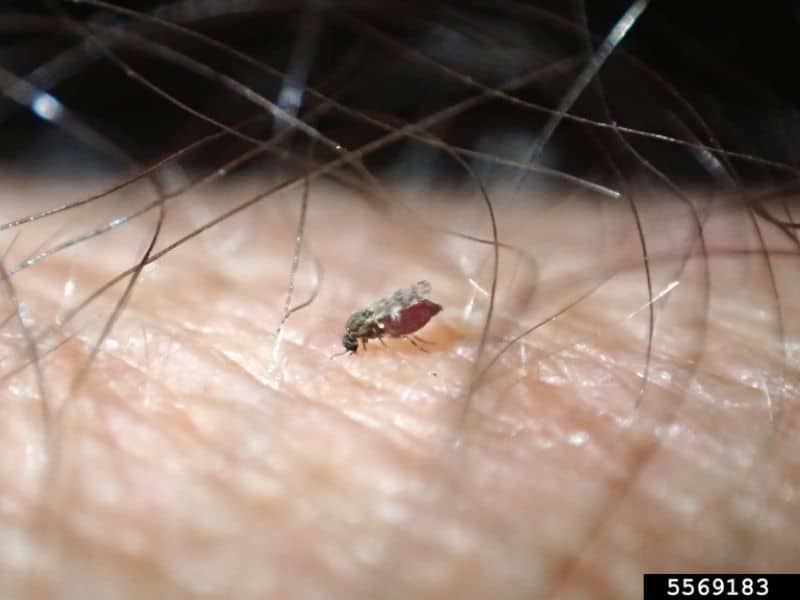
No see ums are not poisonous or venomous; their bites contain no poison or venom whatsoever. They also do not lay eggs under the human skin. However, their bites can be irritating, itchy, and painful. Also, depending on the species, they may transmit infectious diseases to animals and humans.
In most cases of no see um bites, the worst thing you may have to deal with is the irritation and pain. No see ums laying eggs beneath the skin is a myth that is not supported by any facts.
If you’ve been bitten by a no-see-um, there’s little to worry about besides an irritating itch. A common myth is that no-see-ums lay eggs under your skin, but this is not the case at all. When you are bitten by a no see um, you will definitely know it due to the sensations of discomfort that they cause.
Their little size does not mean that the damage that no see ums cause is insignificant. Indeed, they are only a third of the size of mosquitoes; however, these tiny insect pests relentlessly pursue their hosts – that is, humans and other animals – in order to get their much needed blood meal.
In return, their hosts not only get an irritating and painful bite, but they can also contract infectious microorganisms coming from these biting insects.
As previously mentioned, not all no see um species are able to transmit disease-causing microbes to people. Tropical species of these pests can cause serious diseases, such as filarial worms, leishmaniasis, and phlebotomus. These infections can be very hard to cure.
Generally, even if these diseases are quite difficult to resolve, they are not fatal. However, they are illnesses that inflict chronically reoccurring symptoms which can persist for a long time.
Poor tropical countries have rampant malnutrition, so that many poor people get generally weaker immune systems. To add to the problem, there is only limited access to medical care, so that the possibility of danger from these infectious diseases is increased.
In addition, no see ums infect domestic animals, particularly livestock species. They also infect wildlife. They transmit diseases and parasites like the bluetongue virus and hemorrhagic epizootic disease. Bluetongue alone causes the livestock and agricultural industry a loss of over 120 million US dollars every year.
In wildlife, hemorrhagic epizootic disease, is contracted by white-tailed deer from no see um bites.
No see ums are annoying little pests. But are the US species dangerous to humans? Even if they do not bite as often as mosquitoes, they do still bite because blood from their hosts is integral and absolutely necessary for their reproduction and continued existence.
Although it is very rare, no see ums as well as sand flies do transmit human disease. In particular, this disease is caused by the bacterium Bartonella bacilliformis, and the illness is known as Carrion’s disease.
According to the Center for Disease Control and Prevention or CDC, this disease is only present in South America and in higher elevations in that continent.
It is still possible, however, for this disease to travel to the US, because it is vector-borne, or is transmitted via intermediate hosts that can travel to various places. In this case, the vector is a flying insect, the no see um.
In addition, people traveling to South America and places which have this disease can contract it there and bring the disease back to the US and other countries. It is thus very possible to see cases of this illness in the US. In fact, at least one report has already been made of an illness in a child who was bitten by a no see um.
The symptoms seen in an infection of Carrion’s disease consist of two distinct phases. In the first phase, there is headache, fever, muscle aches, anemia, and abdominal aches.
This is known as the Oroya fever phase. In the second phase, there appear lesions of nodular growth under the patient’s skin. These growths consist of purple and red bubbles that can bleed and get ulcerated.
If the patient’s immune system is compromised, two more complications may possibly occur. The first is bacillary angiomatosis, which comprises lesions on the skin, bone, tissue, as well as other organs. The second is called subacute endocarditis. This is a heart infection which affects the heart valve.
A Bartonella infection can be treated with antibiotics.
Unfortunately, it can cause death if it is left untreated. As is the case with other diseases transmitted by no see ums, this bacterium may also persist for a long time, and can resurface again long after the initial bite had occurred from the no-see-um, sand fly, or midge species from which the infection was transmitted.
Can No See Ums Live in My Hair?
No see ums cannot live in human hair for any length of time, because they prefer to live in areas that have bodies of water or are constantly damp or moist. When they are pestering a person, they may get entangled for a while in their hair, but they will definitely never live in it.
Aside from human hair, no see ums also do not live in any other part of the human body. Their life cycle simply does not permit any of their life stages to include residence in our bodies.
Thus, the myth previously mentioned that no see ums lay eggs under our skin is simply not true. This old wives’ tale is only used for scaring young people in order to keep them from staying out of the home at dusk.
Can No See Ums Live in Clothing?
As with the human body, no see ums are also incapable of living in our clothing. Clothing has no properties by which no see ums can thrive. It is simply inadequate and inappropriate to serve as their habitat.
You may also be wondering if they can bite through clothing, and the answer to this is no. Their bodies and their mouthpieces are too small to penetrate the fabric of even the lightest of clothing materials.
If you are in a tropical or warm climate, you would definitely not want to wear more clothes than are necessary. Additional layers of fabric would be too uncomfortable from the increased humidity and heat.
In cases of high numbers of no see um infestations, however, you may need to wear a light and long sleeved type of clothing to protect your from their bites. You should also wear long pants. These clothes will cover your arms and legs and protect you and provide relief.
Other pieces of clothing will also help, including socks and other fabrics that will cover other parts of your skin.
Can No See Ums Live in Your Bed?
Unlike bed bugs, fleas, and other insect pests, no see ums cannot live in beds. They are very fragile creatures, and staying in beds where they can get easily crushed by humans lying on it will kill them. Beds are also unsuitable living areas given their requirements of moist surroundings.
Related questions
Are no see ums able to stay inside the home?
Definitely. No see ums may be naturally occurring in the outdoors, but this does not mean they will not follow you or go inside your home when they need to. In fact, these insect pests are so small that they can easily pass through houses with screens on doors and windows. Entering your abode is very easy for them, and they will not hesitate to do so when they need to feed on your blood.
Is toothpaste helpful in treating no see um bites?
In general, toothpaste can help in alleviating the symptoms of bites from insects. They can provide temporary relief from the itchiness. Menthol is the active ingredient that helps soothe the discomfort; it serves as a cooling agent that distracts you from having the tendency to scratch the bite site.
This article is part of What Are No See Ums Attracted To and What Repels Them? series.
Previous Post: What Do No See Ums Look Like?
Medical Disclaimer: TheHomePestControl is a digital publisher and does not offer personal health or medical advice. The contents of this website are not intended to substitute for professional medical advice, diagnosis, or treatment.
Affiliate Disclaimer: As an Amazon Associate, I earn from qualifying purchases made on our website. If you make a purchase through links from this website, I may earn a commission at no additional cost to you.

